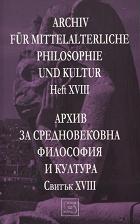Логико-философски критерии в христологията според трактата "Против Севир" на Теодор Абу Кура
Logical and Philosophical Criteria in Christology According to The Treatise on the Veneration of the Holy Icons by Theodore Abu Qurra
Author(s): Smilen MarkovSubject(s): Philosophy
Published by: Издателство »Изток-Запад«
Keywords: Logic; and Philosophy; Christology; Theodore Abu Qurra; Byzantine philosophy; Iconoclasm; Monophysitism; Nestorianism; John of Damascus; pragma
Summary/Abstract: Although Theodore Abu Qurra (755–830) is not traditionally associated with Byzantine philosophy, he is recognizable as a successor of the Byzantine philosophical style. The concepts elaborated in his texts testify for a continuation of the theological synthesis that started in the aftermath of Iconoclasm. The intellectual style of Theodore is that of a mediator between the Arabic and the Christian civilizations. He works out common criteria for refuting the recurrences of Monophysitism and Nestorianism among the Greek-speaking population in Syria, living already in Arabic cultural milieu. Referring to the common Aristotelian root of both heresies and following the argumentation of Maximus Confessor and John of Damascus, he introduces the term “pragma” as a point of coherence of logical and ontological terminology. It is the ontological bearer of the essence and a logical member of the natural species. Its peculiarity, which is the existential limit of being, however, can be defined neither by ontological terms, nor by logical ones. It is noteworthy that during the 8th and 9th century Byzantine philosophy explains the personal identity not through terms, but through existential limits.
Journal: Архив за средновековна философия и култура
- Issue Year: 2012
- Issue No: 18
- Page Range: 46-61
- Page Count: 16
- Language: Bulgarian
- Content File-PDF

